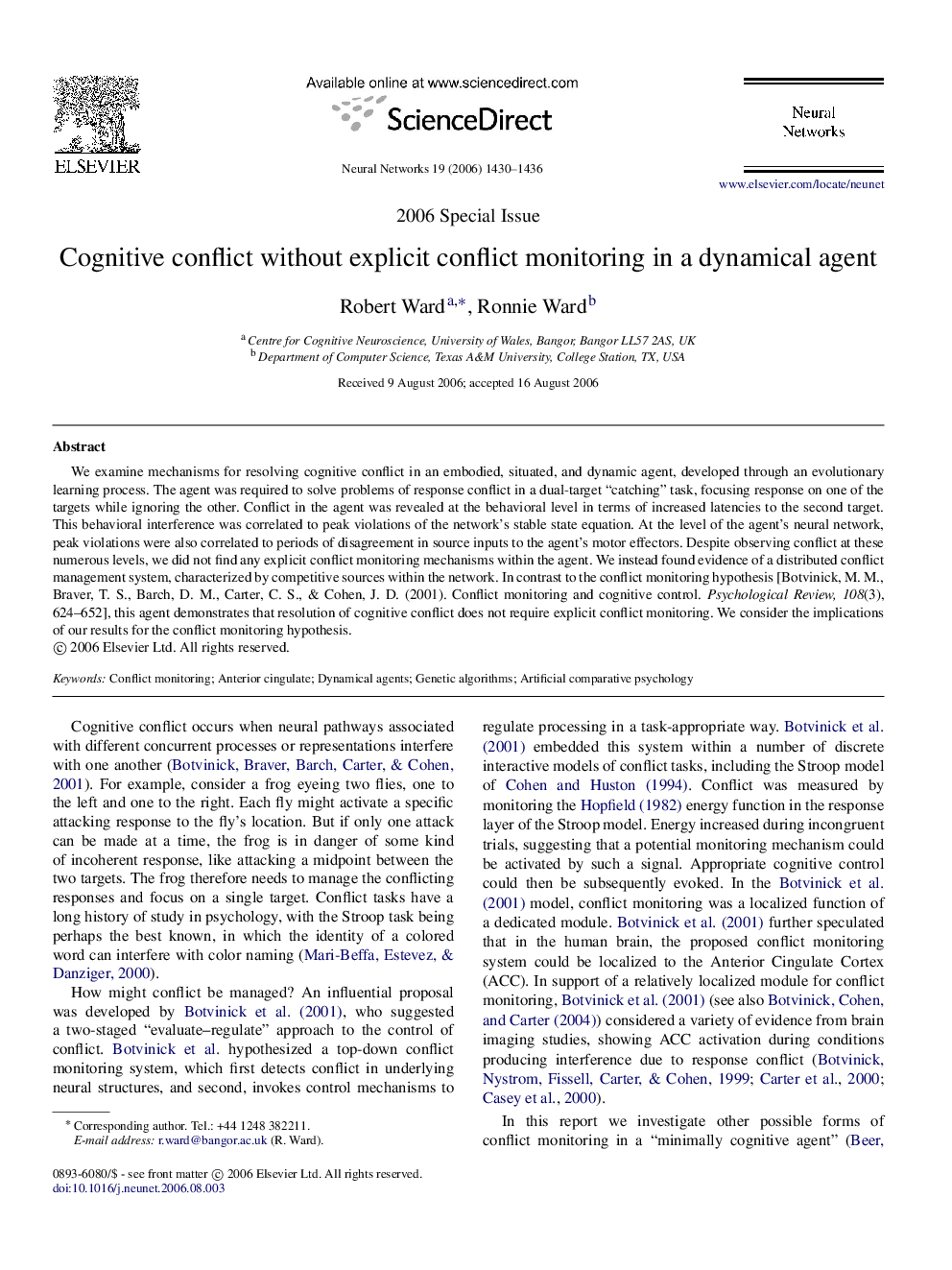| Article ID | Journal | Published Year | Pages | File Type |
|---|---|---|---|---|
| 407806 | Neural Networks | 2006 | 7 Pages |
We examine mechanisms for resolving cognitive conflict in an embodied, situated, and dynamic agent, developed through an evolutionary learning process. The agent was required to solve problems of response conflict in a dual-target “catching” task, focusing response on one of the targets while ignoring the other. Conflict in the agent was revealed at the behavioral level in terms of increased latencies to the second target. This behavioral interference was correlated to peak violations of the network’s stable state equation. At the level of the agent’s neural network, peak violations were also correlated to periods of disagreement in source inputs to the agent’s motor effectors. Despite observing conflict at these numerous levels, we did not find any explicit conflict monitoring mechanisms within the agent. We instead found evidence of a distributed conflict management system, characterized by competitive sources within the network. In contrast to the conflict monitoring hypothesis [Botvinick, M. M., Braver, T. S., Barch, D. M., Carter, C. S., & Cohen, J. D. (2001). Conflict monitoring and cognitive control. Psychological Review, 108(3), 624–652], this agent demonstrates that resolution of cognitive conflict does not require explicit conflict monitoring. We consider the implications of our results for the conflict monitoring hypothesis.
